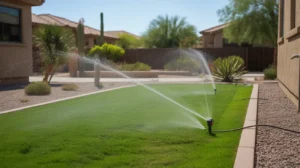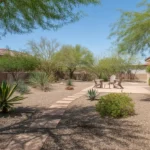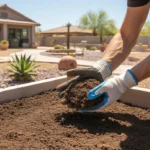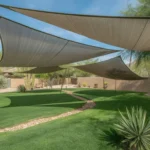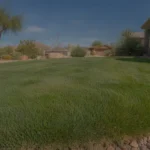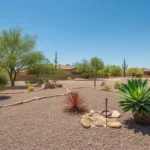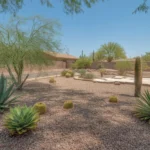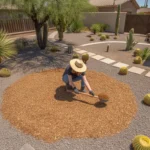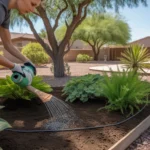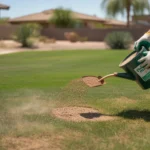Keeping your Chandler lawn green and thriving through the scorching heat of July can feel like an uphill battle. With temperatures regularly soaring over 100°F, it’s easy for once-lush grass to quickly turn crispy and brown. However, with the right strategies and a bit of extra TLC, it’s possible to maintain a beautiful, healthy lawn all summer long. Here are some proven tips to help your grass beat the heat.
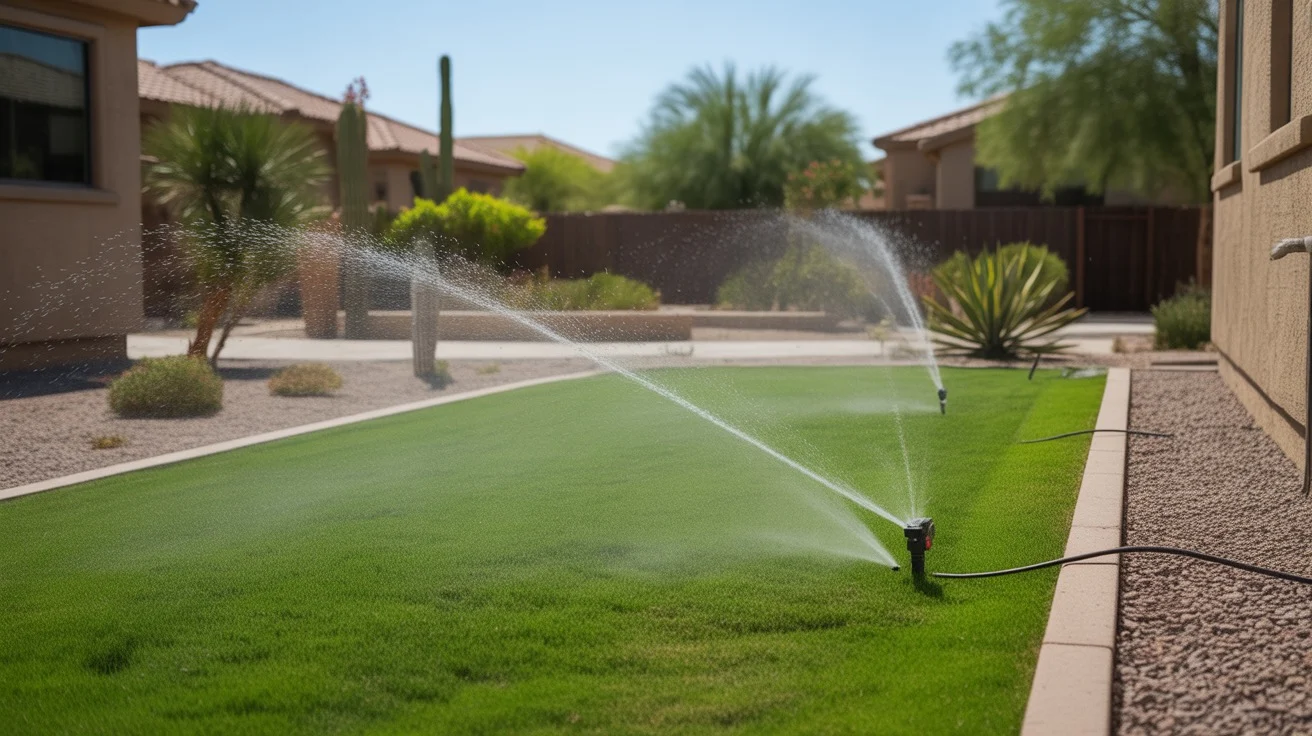
Adjust Your Watering Schedule
One of the most critical factors in summer lawn care is proper watering. In Chandler’s intense July heat, your grass needs more moisture to stay hydrated and healthy. However, it’s not just about watering more—it’s about watering smarter.
Aim to water your lawn deeply and infrequently, rather than with short, frequent sessions. Deep watering encourages grass roots to grow deeper into the soil, making them more resilient to heat and drought stress. Water early in the morning, between 4am-8am, to give the grass time to absorb the moisture before the sun’s rays intensify. Avoid watering in the evening, as this can promote fungal growth.
A good rule of thumb is to provide your lawn with 1-1.5 inches of water per week, split into 2-3 sessions. Use a rain gauge or tuna can to measure your sprinkler output and adjust the run time accordingly. Remember, Chandler has watering restrictions in place during the summer—be sure to follow the designated schedule for your address.
Mow High and Let Grass Grow
While it may be tempting to give your lawn a crew cut to reduce maintenance, resist the urge. Mowing too short can stress the grass and expose the soil to excess heat, leading to dried out, damaged turf.
Instead, raise your mower blade to one of the highest settings, typically around 3-4 inches for most Chandler grass types. Taller grass blades provide more shade for the soil, helping to retain moisture and keep roots cooler. Longer grass also has a larger surface area for photosynthesis, allowing it to produce more energy for growth and recovery from heat stress.
Additionally, try to minimize foot traffic on your lawn during extreme heat spells. Compacted soil makes it harder for grass roots to access water and nutrients. If you must walk on the grass, vary your path to avoid creating worn trails.
Sharpen Mower Blades for Clean Cuts
Dull mower blades can tear and shred grass blades rather than slicing cleanly. These jagged, damaged grass tips are more susceptible to moisture loss and heat stress, turning brown faster. They’re also more vulnerable to disease and pests.
Keep your mower blades sharp for optimum lawn health. Aim to sharpen the blades at least 2-3 times per growing season, or more often if you have a large lawn or mow frequently. If you’re not comfortable sharpening the blades yourself, many local hardware stores and garden centers offer this service.
When mowing, follow the “one-third” rule: never remove more than one-third of the grass blade height in a single mowing session. If your grass has gotten too tall, gradually lower the height over several mowings to avoid shocking the turf. Always mow when the grass is dry to prevent clumping and tearing.
Feed Your Lawn for Summer Strength
Proper nutrition is key to helping your grass withstand the stresses of Chandler’s brutal summer heat. A well-fed lawn grows deeper roots, retains moisture better, and recovers faster from heat damage.
Choose a summer-specific fertilizer formula that’s high in potassium, which helps grass tolerate heat and drought. Avoid high-nitrogen formulas, as these can stimulate excessive top growth at the expense of root development. Slow-release organic fertilizers are a great choice for summer feeding, as they provide a steady nutrient supply without risking burn.
Apply fertilizer evenly across the lawn, following the package instructions for application rates. Water thoroughly after application to help the nutrients soak into the soil. Be careful not to over-fertilize, as this can lead to nutrient imbalances and make the grass more vulnerable to heat stress and disease.
Spot-Treat Weeds and Brown Patches
Even with the best care, weeds and brown spots can still pop up in your Chandler lawn during the heat of July. Prompt treatment is essential to stop these issues from spreading and taking over your turf.
For weeds, spot-treat with a targeted herbicide rather than broadcasting weed killer over the entire lawn. Be sure to choose a product that’s safe for your grass type and follow the label instructions carefully. Pull any large weeds by hand, making sure to remove the entire root to prevent regrowth.
If you notice brown or bare patches, first check for signs of pests or disease. Fungal issues like dollar spot can crop up in Chandler’s humid monsoon conditions. Treat affected areas with a fungicide and avoid overwatering, which can worsen the problem.
For dog spots or areas damaged by fertilizer burn, reseed with a heat-tolerant grass blend. Rake out any dead grass, loosen the soil, and sprinkle seed evenly over the patch. Top with a thin layer of compost or peat moss and keep the area consistently moist until the new grass is established.
Aerate and Dethatch for Breathing Room
Over time, soil can become compacted and thatch can build up on the surface of your lawn, making it harder for water, air, and nutrients to penetrate to the grass roots. This stress leaves your turf more vulnerable to heat damage and drought.
Core aeration, where small plugs of soil are removed from the lawn, helps to alleviate compaction and improve drainage. Aim to aerate your Chandler lawn at least once per year, ideally in late spring or early fall when the grass is actively growing. Avoid aerating during the peak of summer heat.
Dethatching removes the layer of dead grass and roots that can accumulate on the soil surface. While a thin layer of thatch is beneficial, a thatch layer thicker than 1/2 inch can impede moisture and nutrient absorption. Use a dethatching rake or rent a power dethatcher to remove excess buildup. Again, the best time to dethatch is during cooler weather when the grass is actively growing.
Maintain Consistent Care for Best Results
The key to a healthy, green Chandler lawn in July is consistent, attentive care. Establish a regular maintenance routine and stick to it, adjusting as needed for weather conditions and your lawn’s specific needs.
In addition to proper watering, mowing, and feeding, be sure to clean up any debris that may accumulate on your lawn. Fallen leaves, grass clippings, and dead vegetation can smother the grass and trap excess moisture, leading to disease and heat stress.
By following these tips and giving your lawn a little extra TLC, you can keep your grass green and thriving all summer long, despite the intense Chandler heat. With patience and persistence, you’ll be rewarded with a lush, beautiful lawn that’s the envy of the neighborhood, even in the depths of July.

